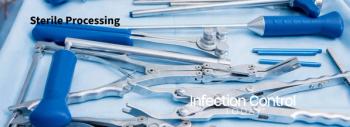
- Infection Control Today, October 2022, (Vol. 26, No. 8)
- Volume 26
- Issue 8
How to Choose the Best Disinfectant Wipe for a Facility
Standardizing disinfectant wipes across multiple facilities requires comparing active ingredients, kill claims, and dwell times.
With over 300 facilities in one health care system, how does an infection preventionist (IP) narrow down the many options for disinfectant wipes while keeping both health care workers and the medical equipment safe?
Maria Montero, MPH, MT(ASCP)SM, CIC, FAPIC, IP, Northwestern Medicine Delnor Hospital, researched this topic for her health care system and spoke to Infection Control Today® (ICT®) about the study for which she was lead author, “
“The importance [of the study] was to make sure that clinical staff were using cleaning and disinfecting surfaces and medical equipment appropriately, correctly following the correct contact times using the appropriate disinfectant wipes,” Montero told ICT® in the exclusive interview. “When we started this, there was a mixture of different types of wipes different chemicals. It was very difficult when we asked staff, “How do you clean this piece of equipment?” for them to remember the appropriate dwell time for each wipe that they used. We found this very important to standardize our disinfectant wipes across the system. When COVID-19 came, the pandemic enforced the importance of doing this because we started having difficulty securing disinfecting wipes.”
Another key point that Montero made was the safety and efficacy of the wipes used on the various equipment in the many facilities she and her team studied. In order to find the safest and most efficient wipe, she told ICT®, “We partnered with our vendor, and we shared the top 10 pieces of equipment that we used across the system, and they did a crosswalk in [to verify the wipes were safe]."
Montero said that for some of the wipes, the equipment or wipes were so new that there was no documentation yet to verify their efficacy or safety. However, “the vendor was instrumental in helping us with determining if the product was going to be safe for that piece of equipment.”
Articles in this issue
about 3 years ago
Product Locator: October 2022about 3 years ago
Preventing Influenza in the Health Care Settingabout 3 years ago
The 3 C’s: Communicationabout 3 years ago
Bug of the Month: Watch Your Cat for Me!over 3 years ago
Monkeypox: Birx Says We Are Not Ready for a New PandemicNewsletter
Stay prepared and protected with Infection Control Today's newsletter, delivering essential updates, best practices, and expert insights for infection preventionists.






